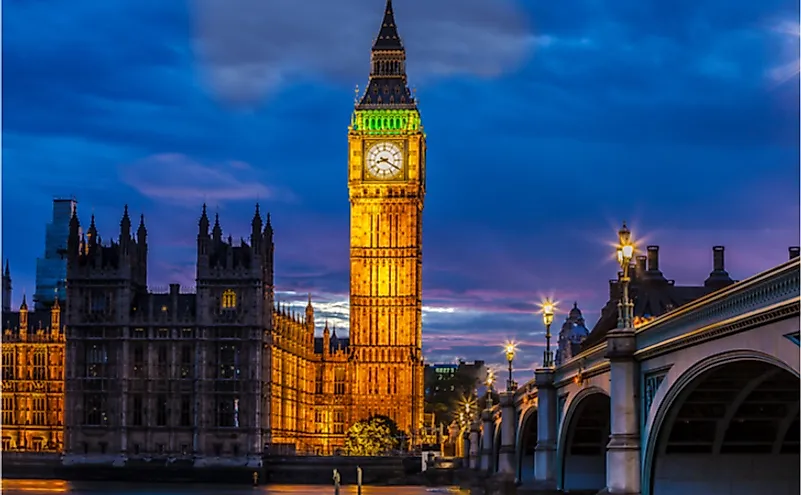Why Was The Big Ben Built?

Big Ben has been a world-famous symbol of British culture ever since it first rang out on May 31, 1859. Its name refers to the thirteen plus ton bell housed inside the iconic bell tower which measures 315 feet in height and includes 334 steps from the ground level up to the belfry. Designed by British architect Augustus Pugin, Big Ben was constructed in a neo-Gothic style to serve as the standard clock of the city. It includes four clock faces each featuring 312 pieces of glass, minute hands measuring fourteen feet long, and numbers about 23 inches long. Lights illuminate the clock face during the night time hours as well as when the U.K.’s parliament is in session.
History Of The Big Ben
Big Ben is the nickname for the iconic tower which is located in the north end of London’s House of Parliament at the Palace of Westminster which sits on the banks of the River Thames. Although originally this massive structure’s official name was the Clock Tower, it was renamed the Elizabethan Tower in 2012 in honor of Queen Elizabeth II’s Diamond Jubilee.
Big Ben’s origins can be traced back to the disastrous fire of October 16, 1834, which destroyed the original Palace of Westminster. Ten years later a clock and tower were included as part of plans devised by chief architect Charles Barry for the construction of the new Houses of Parliament. Barry turned to Augustus Pugin to design the distinctive clock tower. Pugin specialized in designing structures in the Gothic Revival architectural tradition. Unfortunately for Pugin, who was known for his work on English buildings such as Scarisbrick Hall located in the northeastern English county of Lancashire, Big Ben marked the end of his career as he went insane and subsequently died in 1852 at the age of 40.
The Iconic Bell Of Big Ben
The modern Big Ben is not the tower’s original bell. The very first bell, which weighed some sixteen tons, developed a crack in 1857. It was replaced in July 1859 by a lighter bell which also cracked three months later. Finally, the problem was solved by Sir George Airy, a mathematician and astronomer, who proposed that the enormous bell be rotated for the hammer (which had also been replaced with a less heavy version) to strike the bell at a different spot.
How Did Big Ben Get Its Name?
Although it is not known for certain just why the U.K.’s famous clock tower acquired the nickname Big Ben, several theories exist as to its origin. One of them mentions that the structure was named after Sir Benjamin Hall (1802-1867) a civil engineer and politician from Wales who was serving as the First Commissioner for Works at the time of tower’s construction and was known by the nickname “Big Ben.” An alternative theory centers around a bare-knuckle heavyweight boxing champion named Benjamin Caunt (1815- 1861) who had also acquired the nicknames "Torkard Giant" and "Big Ben." It is thought that due to Caunt’s achievements in the ring and his heavyset physique it became common for those in British society to refer to anything that was regarded to be the heaviest in its class using the term “Big Ben.”
While the Big Ben is the most important clocktower of the UK, here is a list of the most impressive clock towers from around the world.











